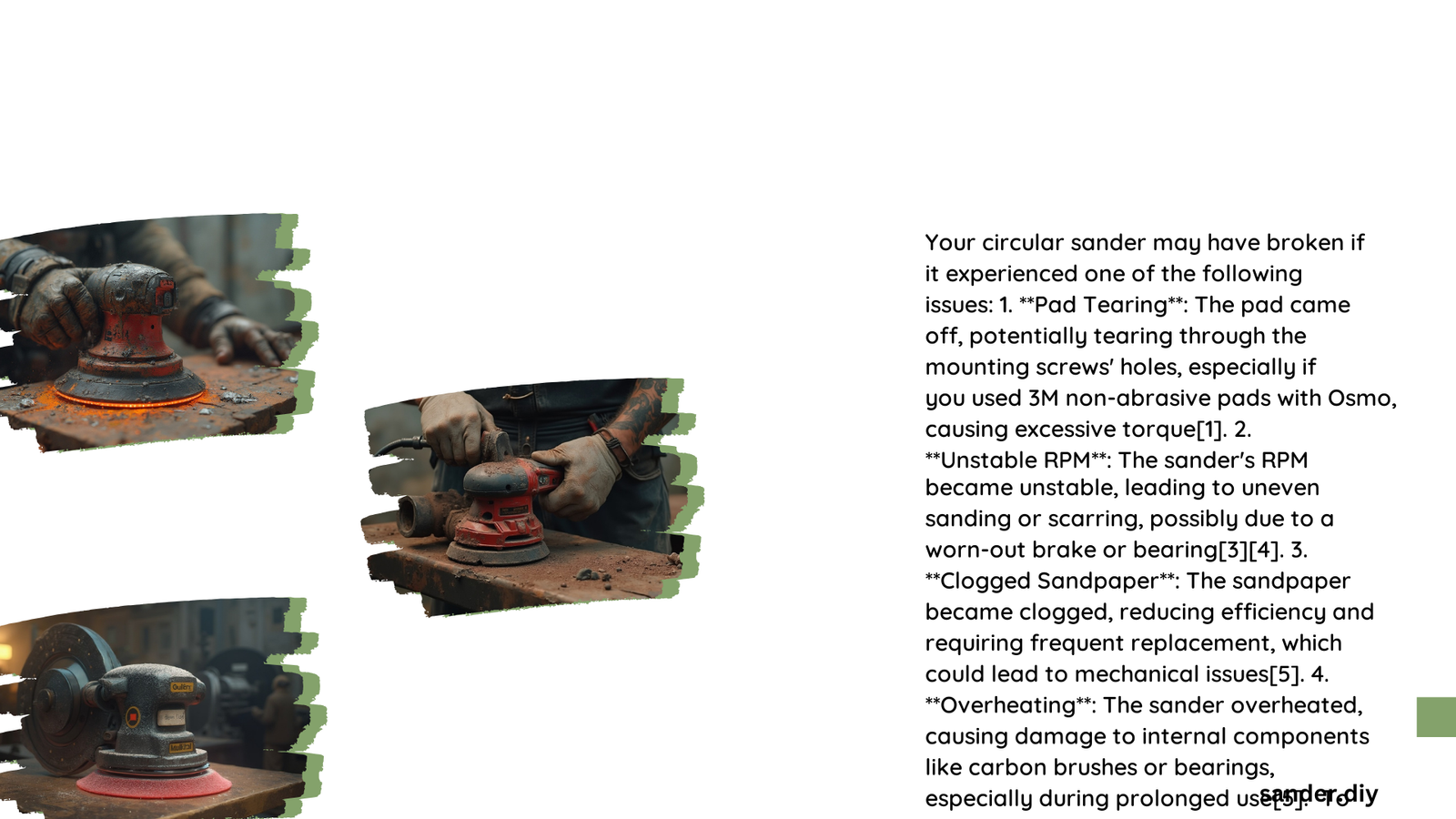A circular sander can unexpectedly malfunction due to various mechanical, electrical, and operational issues. Understanding the precise symptoms and root causes is crucial for determining whether your tool is genuinely broken or requires minor repairs. This comprehensive guide will help you systematically diagnose potential problems and decide the most appropriate course of action.
What Are the Initial Signs of Sander Damage?
How Can I Detect Unusual Performance?
Identifying potential sander damage involves recognizing several critical indicators:
| Performance Indicator | Potential Issue | Severity Level |
|---|---|---|
| Excessive Noise | Motor/Bearing Damage | High |
| Power Fluctuations | Electrical Problems | Medium |
| Overheating | Motor Strain | Critical |
| Inconsistent Sanding | Mechanical Wear | Low-Medium |
What Specific Symptoms Suggest Sander Failure?
Mechanical Red Flags
- Grinding or scraping sounds during operation
- Unexpected vibrations
- Sudden power interruptions
- Visible physical damage to components
Electrical Warning Signs
- Intermittent power supply
- Burnt electrical cord
- Non-responsive power switch
- Tripping circuit breakers during use
How Do I Diagnose Specific Sander Problems?

Can Motor Issues Be Identified Easily?
Motor problems often manifest through:
1. Reduced rotational speed
2. Unusual heating patterns
3. Inconsistent performance under load
4. Complete motor shutdown
What Electrical Components Might Fail?
Critical electrical components susceptible to failure include:
– Power switches
– Internal wiring
– Capacitors
– Brushes
– Cord connections
What Are Recommended Troubleshooting Steps?
How Should I Initially Test My Sander?
Systematic diagnostic approach:
1. Verify power source functionality
2. Inspect cord and plug for damage
3. Check sanding pad alignment
4. Test on different electrical outlets
5. Listen for abnormal operational sounds
Can Minor Repairs Be Performed at Home?
Potential home repairs include:
– Replacing sanding pads
– Cleaning internal components
– Lubricating moving parts
– Checking electrical connections
– Replacing worn brushes
When Should Professional Repair Be Considered?
What Indicates Advanced Sander Damage?
Professional intervention becomes necessary when:
– Motor shows significant wear
– Electrical system requires complex diagnostics
– Repair costs approach replacement value
– Safety mechanisms are compromised
Cost-Effective Recommendations
How Can I Prevent Future Sander Failures?
Maintenance strategies:
– Regular cleaning
– Proper storage
– Using appropriate sandpaper
– Avoiding prolonged continuous operation
– Periodic professional inspection
Conclusion
Understanding whether your circular sander has broken requires careful observation, systematic testing, and knowledge of potential failure points. While some issues can be resolved through simple maintenance, others might necessitate professional repair or tool replacement.
Reference:
– Troubleshooting Orbital Sander Issues
– Random Orbital Sander Repair Guide
– Woodworking Tool Maintenance Forum
